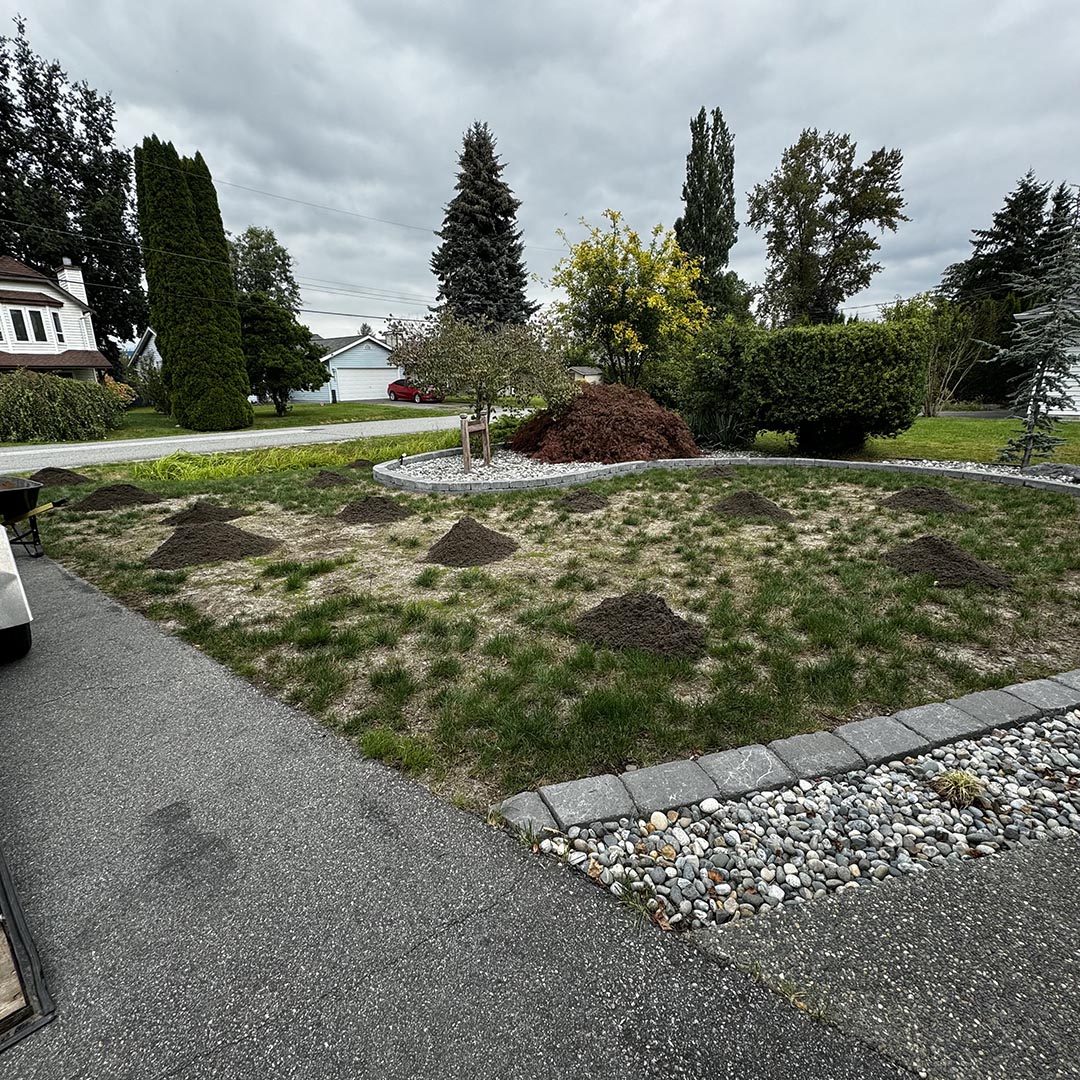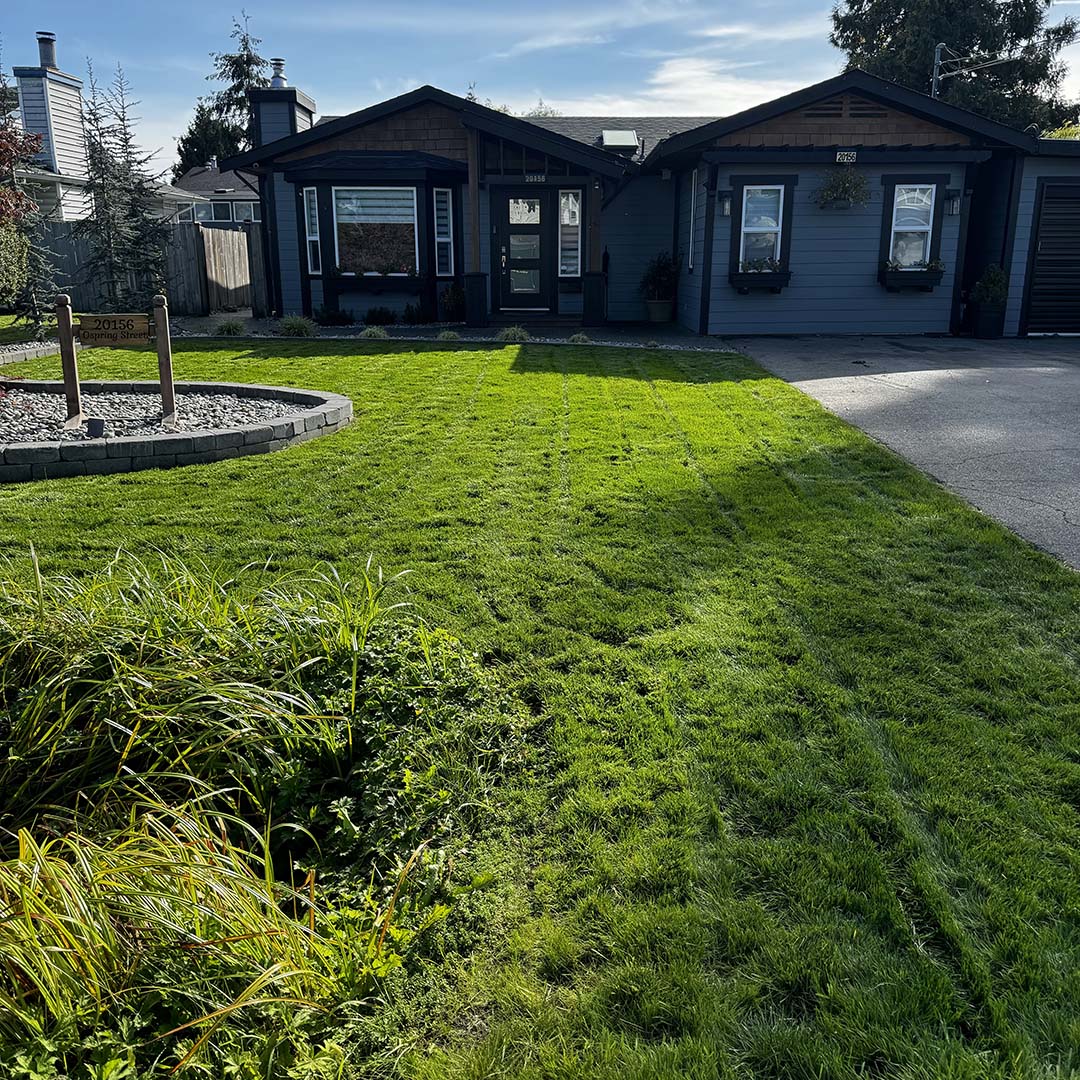We Offer Power Raking And Dethatching!
What You Need to Know About Power Raking
Power raking is essential for maintaining a healthy lawn, especially after the wet Winters that lead to heavy thatch buildup. At BC Mowing & More!, we recommend power raking in early Spring to remove dead grass, moss, and debris, allowing your lawn to breathe and absorb nutrients. Power Raking and Lawn Dethatching improves water penetration and promotes strong root growth, making your grass greener and more resilient. While power raking is beneficial, timing is key, doing it too early or too aggressively can damage new growth. Pairing it with aeration, top dress, lime to control moss, fertilizing, and overseeding closely enhances results, ensuring a lush, thick lawn throughout the season.
Our Power Raking Services include:
At BC Mowing & More!, our power raking services are designed to give your lawn a fresh start each season. We use professional-grade equipment to remove built-up thatch, moss, and debris that can choke your grass and prevent healthy growth. Our process includes a thorough lawn assessment, thorough power raking, and a cleanup to leave your yard looking tidy and revitalized. For the best results, we recommend combining power raking with aeration, top dress, lime to control moss, fertilizing, and overseeding to improve soil health and promote thicker, greener grass. Whether you own a residential or commercial property, our team provides the care your lawn needs to thrive in the region’s unique climate. Trust BC Mowing & More! for reliable, expert service that keeps your lawn looking its greenest and best!
Call us at 1-844-226-6946 to book a free quote or use the link below!
Our Google Reviews
What our customers are saying
Power Rake (Dethatching)
Power raking is a lawn care process that removes excess thatch, moss, and debris to improve grass health and growth. Vertical blades lift and break up the thick layer of organic buildup that can block water, air, and nutrients from reaching the soil. This service is especially important in regions where damp conditions often lead to excessive moss and thatch accumulation. Power raking is best done in early Spring or Fall when the grass can recover quickly and grow stronger. When combined with aeration, top dress, lime, fertilizing, and overseeding, it helps create a thicker, greener, and more resilient lawn.
Power Rake for Moss Control
Moss spreads aggressively in shaded, compacted, or poorly drained areas, choking out healthy grass and preventing proper growth. By using specialized equipment with vertical blades, power raking removes the thick layer of moss, allowing air, water, and nutrients to penetrate the soil again. This process is most effective when combined with other lawn care best practices like aeration, top dress, fertilizing, overseeding and adjusting soil pH with lime to create conditions less favourable for moss. Regular power raking not only eliminates existing moss but also helps prevent future growth, encouraging a stronger, greener lawn. Proper moss control ensures a healthier, more resilient yard that can better withstand damp, dark and acidic weather and soil conditions.
Aeration or Dethatch or Both?
When it comes to lawn care, choosing between aeration, dethatching, or both depends on the condition of the grass and soil. Aeration involves removing small plugs of soil to relieve compaction, improve drainage, and allow roots to access more oxygen, water, and nutrients. Dethatching, or power raking, targets the thick layer of dead grass and organic debris that can build up on the soil’s surface, preventing proper growth. In many cases, combining both services provides the best results—dethatching removes surface barriers while aeration enhances root development and soil health. Lawns with heavy thatch buildup benefit from dethatching first, followed by aeration to maximize recovery and growth.
Right Time to Power Rake?
The right time to power rake depends on the season, grass type, and overall lawn health. Early Spring or early Fall is ideal, as the grass is actively growing and can recover quickly. Power raking too early, when the ground is still wet and cold, can damage new growth, while doing it too late may leave the lawn vulnerable before winter. For cool-season grasses, early Spring is preferred, while warm-season grasses respond better in early Fall. Timing also depends on lawn conditions and recent weather patterns. If the grass appears weak, patchy, or heavily compacted with moss and thatch, power raking may be necessary to restore its health. However, it’s important not to overdo it, power raking is more aggressive than dethatching and should only be done when the lawn shows clear signs of excessive thatch buildup.
After Power Raking the Job is Not Over!
Now that the lawn has been power raked, removing moss and thatch, the next steps are crucial for recovery and long-term health. The soil is now exposed and ready to absorb nutrients, but it also needs additional care to encourage strong grass growth. Aeration is highly recommended, as it relieves soil compaction and improves water, air, and nutrient flow to the roots. Overseeding is another key step, helping to fill in bare spots and promote a thicker, healthier lawn. Applying a high-quality fertilizer will further support new growth, providing essential nutrients for recovery.
After a Power rake and Over-Seeding, Watering is Crucial
Watering and maintenance are also critical in the weeks following a power rake. The lawn should be kept consistently moist but not oversaturated to encourage seed germination and root development. Mowing should be avoided until new growth is well established, typically when the grass reaches about 7.5 cm in height. Adjusting soil pH, if necessary, can also prevent future moss problems and improve overall lawn health. Regular maintenance, including proper mowing, watering, and seasonal fertilization, will ensure that the lawn remains healthy and resilient.
Tips for Maintaining your Lawn after investing in a Power rake or Dethatching
Monitoring the lawn’s condition is essential to ensure it recovers properly. The first few weeks are a critical period when new grass begins to establish itself, and any issues should be addressed quickly. Checking for soil erosion or pooling water will help identify drainage problems that could slow down growth. If heavy rain is in the forecast, adding a thin layer of compost or topsoil can help stabilize the soil and provide additional nutrients. Watching for early signs of weed invasion is also important, as the disturbed lawn may temporarily be more vulnerable to unwanted growth. Using a pre-emergent herbicide can help prevent weeds from taking over while allowing new grass to grow undisturbed.
How to Improve Sunlight and Drainage After Power Raking to Prevent Moss and Thatch
Beyond basic lawn care, improving sunlight exposure and airflow can make a significant difference in maintaining a healthy lawn after power raking. If moss was a major issue before, it may indicate excessive shade or poor air circulation. Trimming overhanging branches, thinning out dense shrubbery, or pruning trees can allow more sunlight to reach the grass, reducing the chances of moss regrowth. Lawns that are prone to excessive moisture may also benefit from improving drainage by creating gentle slopes or installing French drains in problem areas. Addressing these environmental factors will not only support grass growth but also prevent future issues that lead to excessive thatch and moss buildup.
To maintain the benefits of power raking, adjusting the lawn care routine is key. At BC Mowing & More!, we recommend a seasonal maintenance plan that includes light dethatching when necessary, regular aeration, and proper fertilization to prevent excessive thatch buildup. Switching to a mulching mower can also improve soil health by naturally recycling nutrients back into the lawn. As the seasons change, adapting watering schedules and mowing heights will help the grass stay strong, lush, and resilient. A well-maintained lawn not only looks great but also stands up better to ever-changing weather, ensuring long-lasting results from your power raking service.
Franchises Available Across BC Now!
We have franchises available across BC – Cut your daily commute to zero by working close to home!
We are all about Lifestyle! Set your own schedule and prices, take vacations whenever you like, and take on only the work you enjoy doing!
Our franchisees used to be professionals, tradespeople, technicians and more, and most started from outside the industry with no experience at all.
Our Franchise system offers the best support, training, coaching, software and the best brand in Lawn Care and Landscaping in BC!
Click here to learn more
Since 1989
Save Time

Ongoing Support
Training Seminars
Enjoy a BETTER LIFE





